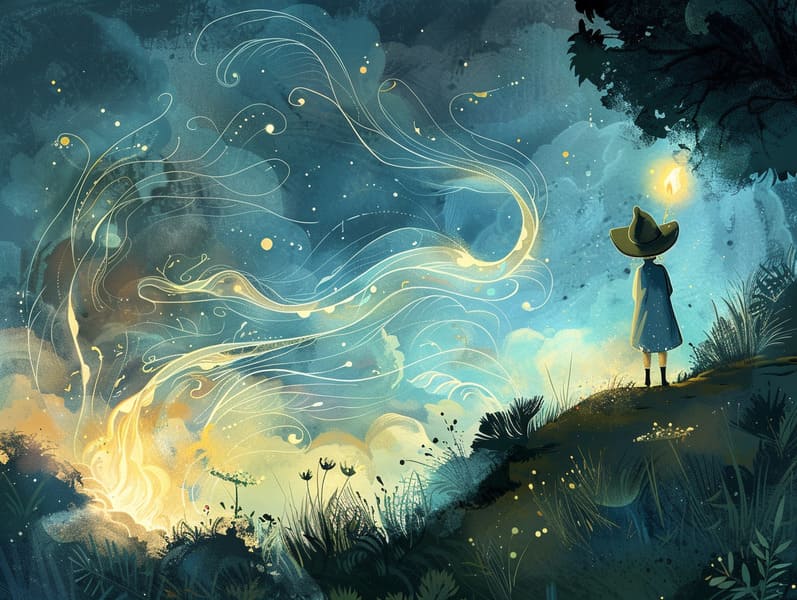The Evolution of Mythical Fairy Tales and the Consistent Grace.
The Evolution of Mythical Fairy Tales and the Consistent Grace.
Blog Article

Famous fairy tales have old origins. These tales have been transmitted from one generation to the next millennia before they were ever put on paper. They were born from a variety of cultures, including Indigenous traditions. They were initially narrated among grown-ups, often carrying themes and messages concerning the societal norms and beliefs of the time.
The famous Grimm duo, Jacob and Wilhelm, were among the first to gather and publish many of these beloved tales. Their published works, "Grimm's Fairy Stories," included narratives like "The Little Glass Slipper," "Little Brother and Little Sister," and "Schneewittchen," which have since become pillars in the world of timeless fairy tales. Similarly, Hans Christian Andersen's imaginative tales, such as "The Mermaid," and "The Duckling's Story," have touched hearts worldwide, guaranteeing their place in the pantheon of treasured fairy tales.
Despite their ancient origins, fairy tales remain as impactful as ever, especially as children's bedtime stories. These enchanting tales are now available in different formats, including beautifully illustrated books, magical animations, and web-based fairy tales.
Their continued relevance can be linked to several magical reasons:
Key Lessons: Classic fairy tales often illustrate important moral lessons. Tales like "The Tale of the Boy Who Cried Wolf" teach the benefit of sincerity, while "The Tortoise and the Hare" stress the benefits of steadfastness and modesty. These tales offer little ones clear distinctions between correct and incorrect, molding their moral compass in a kind yet profound way.
Sympathy and Perception: Fairy tales frequently depict personalities facing challenges and struggles, stimulating young listeners to empathize with their struggles and rally behind their triumphs. For instance, "Beauty's Beast" teaches us the merit of looking deeper to appreciate the true character of a character, building sympathy and recognition.
Cultural Understanding: Many ancient fairy tales are saturated in the cultural contexts from which they blossomed. Understanding these fairy tales can provide intriguing perspectives into different societies, building a sense of world understanding and respect.
Fantasy and Innovation: The fantasy-filled elements in ancient fairy tales—fairy godmothers—awaken children’s fantasies. These tales guide readers to extraordinary realms, engendering imaginative ideas and a sense of astonishment that endures a lifetime.
Timeless fairy tales are not only mesmerizing but also informative. They work as fantastical tools in cultivating various thinking and feeling skills in little ones. When traditional fairy tales are recited, they develop language development by introducing new language website items and sophisticated sentence structures. This practice also enhances listening skills and concentration, as kids track the narrative, anticipating to see what happens next.
Furthermore, deliberating the themes and characters of classic fairy tales can enhance thought processes and logical thinking. Young readers are instructed to recognize patterns, foresee events, and make sense of cause and effect. These examinations also contribute to children voice their thoughts and feelings, contributing to their emotional intelligence.
In today’s cyber age, the prevalence of free fairy tales online has made these stories more available than ever. Internet resources and applications supply large libraries of popular fairy tales that can be browsed or listened to anytime, anywhere. Fairy tales narrated are particularly popular, featuring an enjoyable way for kids to appreciate these fascinating tales. Voice books and read-out-loud stories transport characters and settings to life, often supplemented by bewitching background sounds and songs that amplify the story journey.
The timeless allure of classic fairy tales lies in their ability to adapt to today's society while sustaining their main lessons. Contemporary reinterpretations of these tales often show more varied characters and modern settings, making them accessible to today’s audience. However, the essential messages of boldness, benevolence, and honesty remain unchanged, continuing to strike a chord with young listeners of all ages.
Old fairy tales also offer a sense of ease and homeliness. They make accessible a coherent narrative with a obvious beginning, middle, and end, often closing with the wrap-up of conflicts and the triumph of morality over wickedness. This steadiness can be encouraging for children, delivering a sense of steadfastness in an always shifting world.
Timeless fairy tales continue to captivate and instruct new generations, maintaining their wonder and meaningfulness in modern society. As children's night stories, they yield a perfect blend of enchantment and education, furthering moral values, empathy, and creativity. The proliferation of web-based fairy tales and the in demand status of fairy tales told out loud guarantee that these old stories remain within reach to new generations.
By upholding and distributing these stories, we continue to celebrate the rich tapestry of cultural legacy and cultural heritage. Whether you are seeing a colorful picture book, enjoying a electronic collection, or listening to an spoken story, the captivation of popular fairy tales is always within reach. These tales demonstrate of the ageless effect of fairy tales and its ability to unite us across centuries and lands.
Even if you are enjoying a colorful picture book, enjoying a digital collection, or listening through an read-aloud book, the delight of popular fairy tales is always within reach.
These stories remind us of the unwavering essence of tales and its ability to hold us together across generations and cultures, establishing a link that enchants and educates alike.